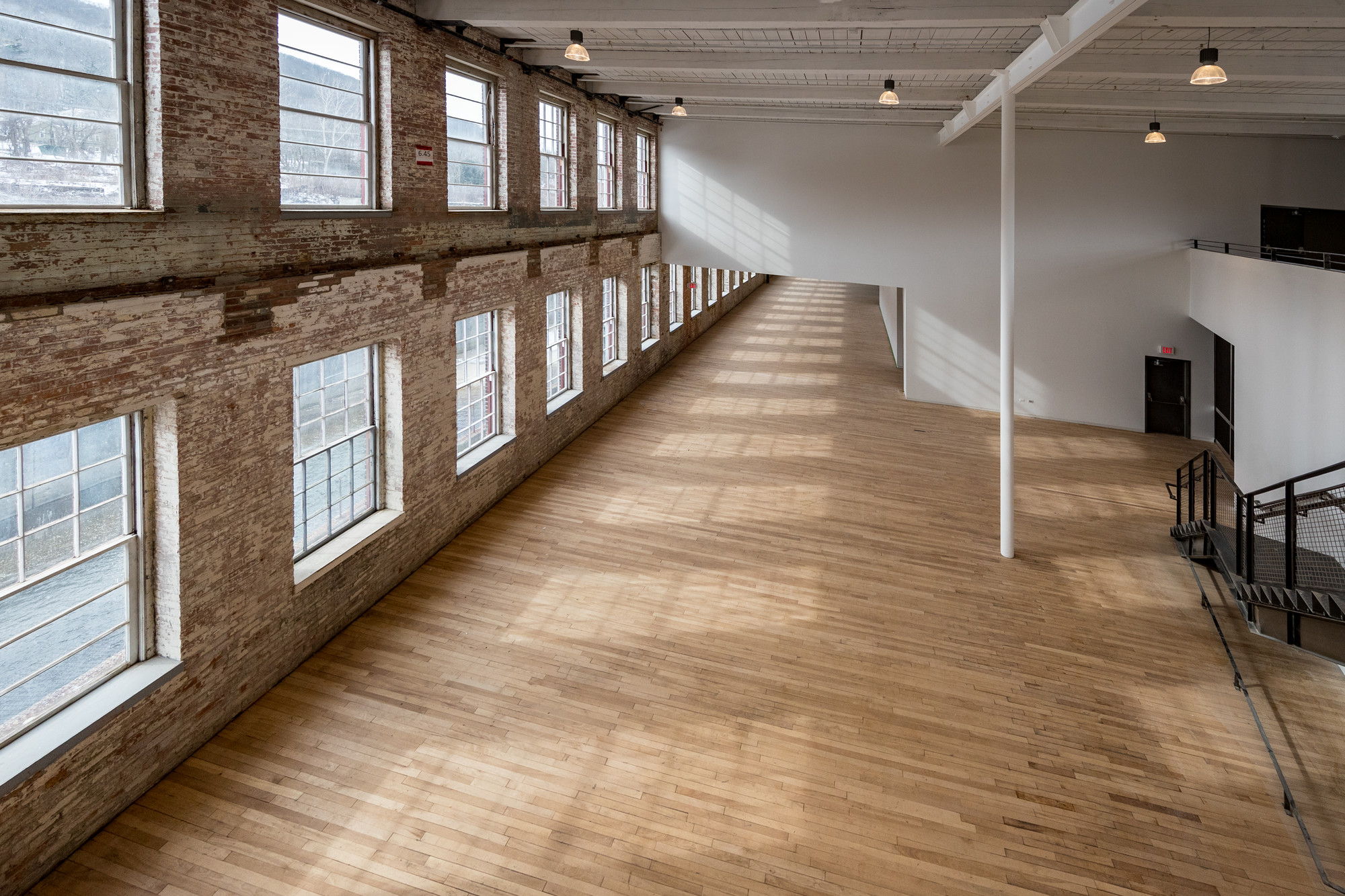
The Massachusetts Museum of Contemporary Art (Mass MoCA) is set to become one of the largest museums of contemporary art in the US when its new Building 6 opens on May 28. Occupying a complex of 19th-century factory buildings in bucolic North Adams, Massachusetts, the institution’s newest and largest wing will double its capacity, bringing its total gallery space to a staggering 250,000 square feet.
The new space includes sprawling installations of work by six artists: sculptor Louise Bourgeois, light artist James Turrell, conceptual text artist Jenny Holzer, performance artist Laurie Anderson, and teacher and instrument-maker Gunnar Schonbeck. Unlike most museum installations, which usually last no longer than one year, these are a serious long-term commitment. Each will be on view for 15 to 25 years.
New construction, Building 6 at Mass MoCA, North Adams, MA. Photo: Douglas Mason, courtesy of Mass MoCA.
Mass MoCA’s director, Joseph Thompson, describes the project as “long-term deep dives into the work and minds of some of the most sharply observant artists of our time…we like to work with artists whose work is enveloping.”
That’s not always easy on the art handlers. The museum went to great lengths to accommodate a 20-ton, never-before-shown marble sculpture by Louise Bourgeois from 1991. In order to safely accommodate it, the architects had to reinforce the floors with steel and concrete. The sculpture was then installed with a crane through a hole that technicians temporarily opened in the building’s facade. The architects also opened up double height spaces to accommodate the light-based works of James Turrell. Also on view will be Barbara Prey’s massive 8 ft. x 15 ft. specially commissioned watercolor depicting the space in its original pre-renovations state, thought to be the largest watercolor in the world, and described by Thompson as a “technical tour de force.”
Other projects will be more mutable (and easier to install). Jenny Holzer will present an evolving selection of work over the next 15 years. For the opening, Mass MoCA will present a mini-retrospective, spanning her wheat paste poster series from the 1970s to projections and paintings completed in the past year.
Similarly, the museum has offered Laurie Anderson a series of rooms that she can use interchangeably as performance spaces, studios, and conventional galleries over the course of the next 15 years. Thompson calls the arrangement “the longest-ever temporary exhibitions.”
“In some ways we’ve entered into a relationship with these artists that’s about their art, but its also about their curatorial vision as well,” he says. The new facility has also dedicated 100,000 square feet of space to rotating short-term exhibitions by artists such as Robert Rauschenberg, Spencer Finch, Lonnie Holley, Sarah Crowner, and Richard Nonas.
New construction, Building 6 at Mass MoCA, North Adams, MA. Photo: Douglas Mason, courtesy of Mass MoCA.
From a design perspective, architects Bruner/Cott & Associates wanted to make sure that the structure retained plenty of its raw industrial character. Building 6 is the latest structure repurposed by the museum, which is located on a campus of 28 factory buildings in North Adams. Funding for Phase III of Mass MoCA’s development, which included the renovation of Building 6 (as well as funding for outreach work and development of downtown North Adams) totaled $65 million, including $25.2 million from the Commonwealth of Massachusetts, and an additional $40 million from private donors.
New construction, Building 6 at Mass MoCA, North Adams, MA. Photo: Douglas Mason, courtesy of Mass MoCA.
“The textures of the building are left largely intact. We reused existing wood floors, we exposed existing walls, we celebrated the thousands of windows that surround the perimeter of the building,” Thompson says. “In short, there’s no doubt that you’re in a historic mill complex when you’re in the building.”
In the months ahead, Thompson promises a series of rotating shows and experiences that span both the visual and performing arts. “It’s probably best to think of Mass MoCA as a turntable rather than a series of boxes,” he says.
New construction, Building 6 at Mass MoCA, North Adams, MA. Photo: Douglas Mason, courtesy of Mass MoCA.